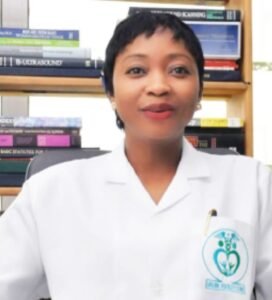Juliet Jacob Ochenje writes on the fear, challenges and other concerns surrounding fibroids in pregnancy.
In the bustling city of Abuja, Mrs. Simon Ruth silently battled with a health issue that eluded her awareness for years—fibroids. In an exclusive interview with the African Health Report (AHR), she shared her journey of discovering this hidden adversary only after embracing motherhood.
“I was having fibroids without even knowing for several years,” Mrs. Simon Ruth revealed. Her realisation came only after marriage and the anticipation of pregnancy. After three years of waiting, marked by the diligent consumption of folic acid, she finally conceived. Yet, her pregnancy journey was not without challenges. Sharp pains in her lower abdomen accompanied her through each trimester, culminating in a cesarean section delivery where the fibroids were surgically removed.

Fibroids, scientifically known as uterine leiomyoma, are noncancerous growths prevalent in women, affecting over 80% of Nigerian women above 25, as reported by the National Institute of Health. Dr. Kemi Ailoje, a Reproductive Endocrinologist and Fertility/IVF Specialist, shed light on these mysterious growths, emphasising their composition of smooth muscle cells and fibrous connective tissue.
The exact cause of fibroids remains elusive, but factors like hormonal imbalances, genetic predisposition, and ethnicity contribute to their development. Dr. Kemi reassures that while fibroids may complicate pregnancy, they don’t guarantee an unsuccessful one. The impact depends on factors such as size, location, and symptoms.

Dr. Kemi outlined scenarios where intervention may be necessary, such as rapid fibroid growth, red degeneration causing severe pain, or obstructed labor due to large fibroids. However, she emphasised that most fibroids can be managed conservatively during pregnancy.
Before attempting to conceive, women with fibroids are advised to consult healthcare providers. Dr. Kemi highlighted that removal might be recommended for reasons such as infertility, recurrent miscarriage, or severe symptoms. During pregnancy, close monitoring becomes crucial, with potential interventions for rapid growth or complications.
The impact of fibroids on delivery varies, with concerns about obstructed labour, preterm birth, and other complications. However, Dr. Kemi emphasised that, with proper monitoring, most women with fibroids have uncomplicated pregnancies.
In summary, fibroids during pregnancy pose challenges, but they don’t necessarily hinder a safe delivery. The journey involves understanding individual circumstances, considering risks and benefits, and consulting healthcare professionals for personalized guidance.
As Mrs. Simon Ruth reflects on her victorious battle, she stands as a testament to resilience and the importance of awareness in navigating the intricate landscape of fibroids during the miraculous journey of pregnancy.


